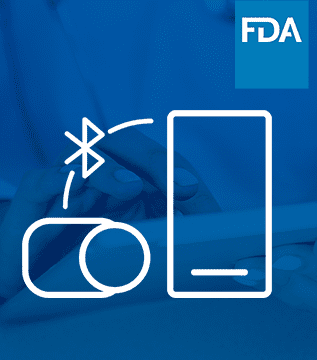
Article
Roundup: Bluetooth Medical Devices Cleared by FDA in 2023
This post was previously on the Pathfinder Software site. Pathfinder Software changed its name to Orthogonal in 2016. Read more.
This guest post is from SpendRadar’s Joy McCaffrey, one of our favorite product managers. Her recent presentation on talking to your customer was so good, I asked her to write a series of guest posts for us.
I recently presented this topic at a Chicago Product Management Association meeting and when Bernhard (Bernhard Kappe, CEO of Orthogonal) asked if I would blog on the topic, I willingly accepted.
When I was originally approached to present on the subject of talking to your customers, I struggled with how to prepare a presentation on the subject. Of course, it’s important to talk to your customers, doesn’t everyone know that? But who exactly are your customers? What do you talk to your customers about? Where and when should you talk to your customers? And other than the obvious reason (hopefully it’s obvious) of customer relationship management, why should you talk to your customers? And that leads me to present on the 5 Ws – Who, What, Where, When and Why. This post is the first in a series covering each topic.
Who:
With 15 years of experience as a product manager, I certainly have a lot of experience talking to customers. But just who are “customers?” I break up customers into 6 different categories:
1. Current Customers
2. New Customers
3. Past Customers
4. Lost Customers
5. Potential Customers
6. Non-Customers
1. Current Customers:
This one is pretty self-explanatory. A current customer is someone who is currently using your product or service. If you’re a startup company, you may not have customers yet, which is okay, since there are so many other “customers” that you can reach out to. You may find yourself at a company that doesn’t know who their customers are. While that may be hard to comprehend, I’ve found myself in that situation. Some companies just don’t keep track of who is using their product or service. They may not use any type of Customer Relationship Management (CRM) program such as Salesforce or Siebel, or if they do, they don’t maintain it. When I found myself in this situation I reached out to project managers, sales reps and the finance department (to find out who paid for the product or service). You could also reach out to IT to see if they have analytics on users. If your company has a blog or a newsletter you could check out the subscribers.
2. New Customers
New customers have just recently begun to use your product. How do you find out who your new customers are? Ask finance, sales or professional services to copy you on all final deals.
3. Past Customers
Past customers no longer use your product or service, but they did use it at one time or another. These customers may also be difficult to find, similar to current customers. The same advice for finding current customers applies for finding past customers.
4. Lost Customers
This category title may be a little misleading. A better title may be “Should Have Been a Customer”, or “Would Have Been a Customer”, or “Could Have Been a Customer.” This was a prospect that went through the sales cycle but for some reason or another chose either to go with another vendor or solution, or no vendor or solution at all. Lost customers may also be challenging to find, as some sales reps, as well as some companies, prefer to downplay the number of deals they’ve “lost.”
5. Potential Customers
Potential customers are aware of and considering your product or solution. I’m not suggesting that you go through the sales funnel and start calling prospects. In fact, I highly recommend that you don’t do that. Some people have very strong opinions in regards to not talking to prospects or potential customers, for very valid reasons. You definitely don’t want to interfere in the sales process, and you don’t want to become the go-to person for sales reps to either close the deal or act as a sales engineer or technical support. I agree with all of those reasons. However, I also believe that there are a number of good reasons to talk to potential customers and that this segment shouldn’t be overlooked.
6. Non-Customers
I’ve heard different definitions for non-customers. Some are very strict, such as “someone who has never heard of your product or service.” That could be difficult if you’re representing a well-known company or brand. I’ve also heard very broad definitions, such as “anyone not currently using your product or service.” I prefer to define non-customers as anyone who is not a current customer, a past customer, a lost customer, or a potential customer.
I’ve found these 6 categories cover just about any type of customer possible. Have I missed any? Have I provided insight into possible “customers” that you can reach out to? My next post will cover the “What.” I look forward to your comments.
Related Posts

Article
Roundup: Bluetooth Medical Devices Cleared by FDA in 2023

White Paper
Software as a Medical Device (SaMD): What It Is & Why It Matters

Article
SaMD Cleared by the FDA: The Ultimate Running List

Article
Help Us Build an Authoritative List of SaMD Cleared by the FDA